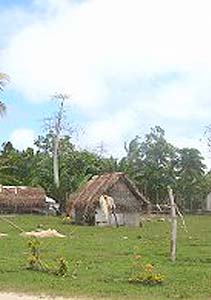 Aloha everyone! I have been thinking a lot recently about the ways in which kava has influenced culture in the societies where it is used regularly. Having grown up here in Hawai’i, I am definitely very familiar with the ways in which kava has influenced our society. Kava is our way to relax and to come together, and it teaches us how to appreciate the beautiful natural environment we are blessed with here on the islands. I really feel that the fact that we use kava here in Hawai’i is a big part of the reason that we have such a calm and friendly culture.
Aloha everyone! I have been thinking a lot recently about the ways in which kava has influenced culture in the societies where it is used regularly. Having grown up here in Hawai’i, I am definitely very familiar with the ways in which kava has influenced our society. Kava is our way to relax and to come together, and it teaches us how to appreciate the beautiful natural environment we are blessed with here on the islands. I really feel that the fact that we use kava here in Hawai’i is a big part of the reason that we have such a calm and friendly culture.
I wanted to know more about the influence of kava on culture, though, so I started doing a little bit of research. I thought it might be good to share some of what I learned about the history of the interaction between man and this amazing plant with all of you!
It seems that kava use began when the plant was discovered by individuals who were living in Vanuatu (formerly known as the New Hebrides). There, kava was first domesticated for use about 3000 years ago. From there, kava use diffused west to New Guinea and Micronesia and east to Fiji and then Polynesia. Fossilized kava stems have been found in archaeological digs in Papua New Guinea, indicating that the plant has been in use there for some time. A number of examples of pottery kava bowls have also been found in dig sites all over the Pacific region!
One indication of how important kava has been in the Pacific is the number of types of kava recognized by indigenous peoples there. In Vanuatu alone, 247 types of kava have been classified. Kava was, and still is both an important social tool and an essential medicine in the Pacific. There, it is particularly associated with sexual energy. The preparation of kava with a mortar and pestle in Vanuatu is seen as a form of sexual intercourse. Myths often attribute the origin of kava and its discovery to women, and one traditional way of preparing kava was to have a child or a young woman to chew the root until it was ready to be infused!
Kava also holds great religious significance in the Pacific, and is said to connect the user with the ancestors and the gods. Here in Hawai’i, tradition states that kava consumption is a way to access the spirit world. Kahunas (Hawai’ian shamans) will still sometimes read the bubbles on the surface of a kava brew in order to diagnose illnesses or to do other forms of divination.
By looking at all of this information, we can see how incredibly important kava was and is in the development of the societies in which it has been used. It has influenced art and pottery, has been an essential part of medicine, and is an incredibly important aspect in shaping and supporting the spiritual practices of societies across the Pacific.
Nowadays, with the appearance of kava bars and the increasing popularity of kava as a supplement, it can be easy to forget that this plant medicine is not a new fad, but is in fact an essential aspect of many ancient cultures and their development. You can definitely feel the power of kava when you experience the traditional cultural arts and activities of these societies. Kava contributes a feeling of peace, calm and community in any society which it touches, and I sincerely hope that it is allowed to continue doing so in to the future. After all, there’s nothing our world needs more than the positive energies that kava has to offer!
Aloha no,
Makaira






Aloha Sharlene!
I’m not 100% sure about the origin of the tanoa in Samoa, but I found this great article that describes the Samoan origin myth of kava. Perhaps it will answer your question better than I can!
Aloha no,
Makaira
What is the originate of the kava bowl or tanoa in samoa